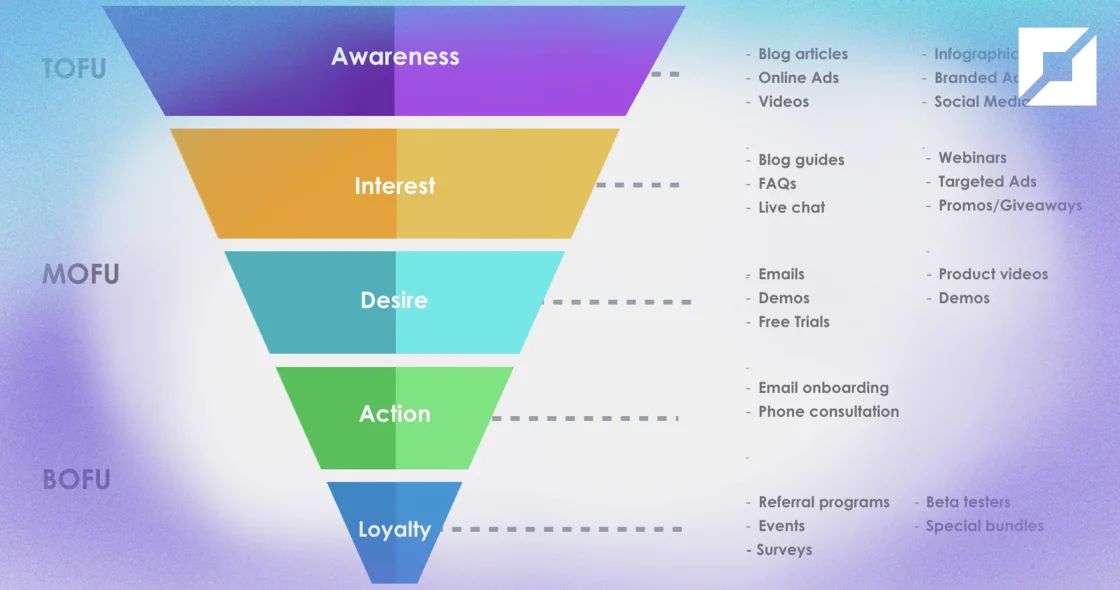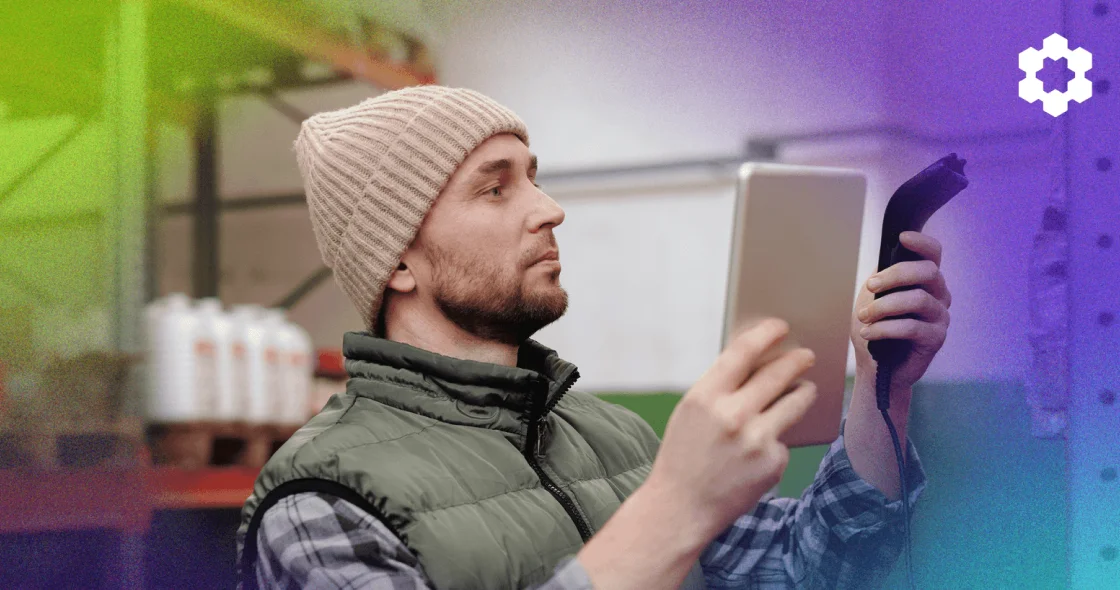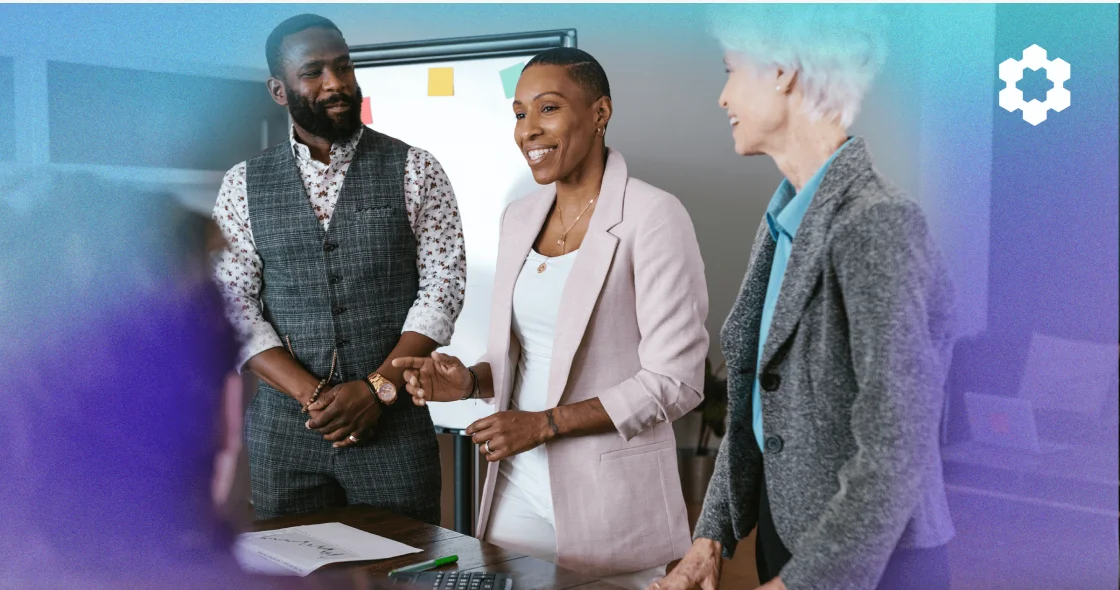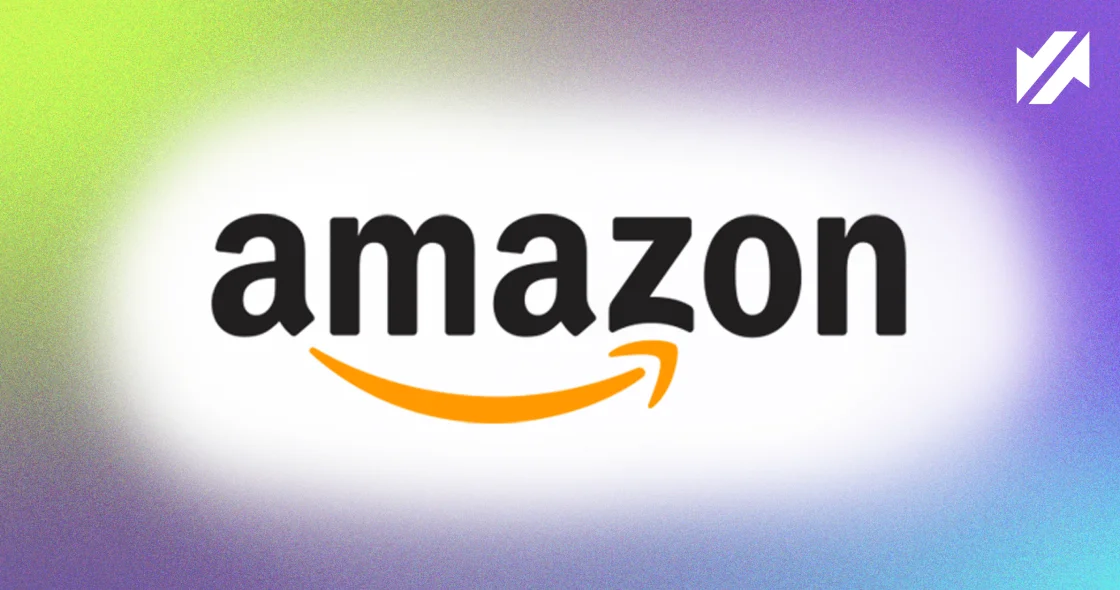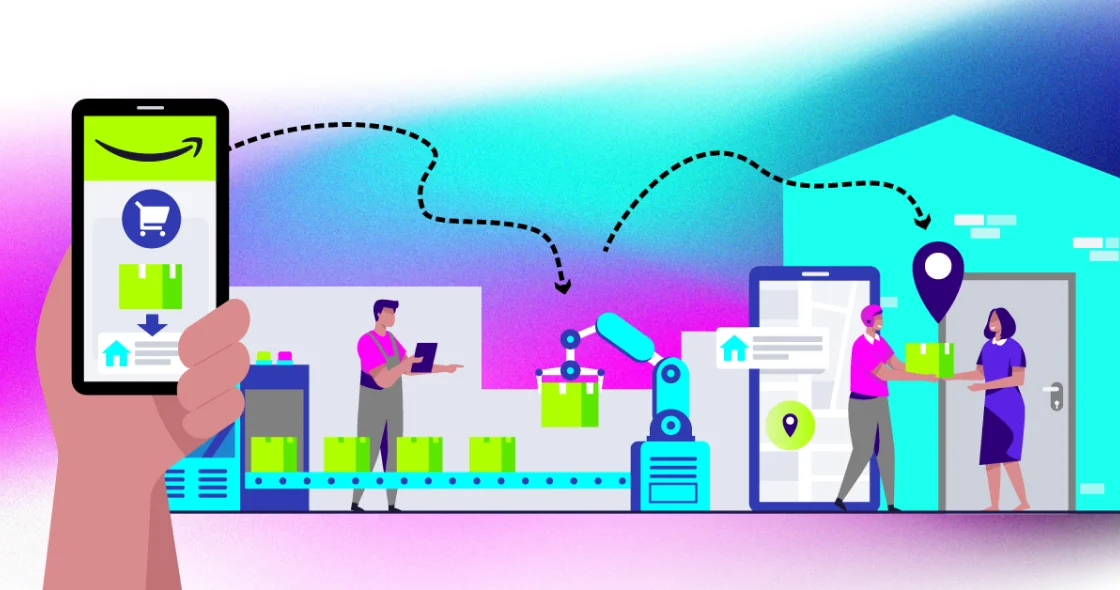The marketing funnel has been around since, well, the first companies in the business of acquiring customers have been established 😁. It’s purely a fancy marketing name for the process of how people become customers and how you drive growth.
Though the general principles of the marketing funnel as a growth framework haven’t evolved much over the years, what has changed are: what the funnel looks like, customer behaviors, tactics used along the customer lifecycle, and teams that lead and contribute to the funnel.
Especially for SaaS companies like ourselves, we’re strong advocates of Product-Led Growth. It makes your product experience the focal point of your customer journeys, and adopts a product-led growth flywheel across your marketing efforts (more on this below and how it’s related to the circle of life).
By mapping out each stage of your customer paths and tracking marketing KPIs, you’ll have the right insights for understanding how customers convert and how to retain them – which are the lifelines of any high growth business.
In this article, we’ll guide you through Marketing Funnels 101 – everything you need to know as a beginner! Including:
- 🔎 What a marketing funnel is
- ♻️ How marketing funnels (and flywheels) work
- 💧 How to improve leaky funnels
What is a Marketing Funnel?
A marketing funnel is the journey of how someone becomes a customer and beyond – from awareness, to conversion, to advocacy.
If you think about an actual funnel, it’s a tube with a wide opening that becomes increasingly more narrow towards the bottom. They were initially built to make it easier to guide liquids or powders into a container (think back to the first time you used one in science class 😉).
In the same way, marketing funnels are intended to create a more scientific and measurable approach to guide potential prospects down into your company bucket. The end goals are to turn them into lifelong customers and ultimately evangelists for your products and services.
As not every prospect will follow down your path to conversion, you’ll likely lose people along each step of your funnel, which is why it gets more narrow towards the bottom.
We’ll put things in better perspective with some visual funnels below 📊.
How Do Marketing Funnels Work?
Marketing Funnel Stages
TOFU, MOFU, BOFU & AIDA: Nope, we’re not talking about soy products 🍢 or operas 🎶. Since we all love an easy to remember acronym, these 4 are particularly helpful when drafting out your customer stages and remembering how the marketing funnel works.
TOFU, MOFU, BOFU
- TOFU: Top of the funnel. The tactics you use to generate awareness.
- MOFU: Middle of the funnel. The tactics you use to generate leads.
- BOFU: Bottom of the funnel. The tactics you use to generate customers and keep them satisfied.
AIDA
- 👋 Awareness: Attract your ideal audience. For example, we invest heavily in Inbound Marketing through blog articles around marketing topics that help our target audience. KPI example: website visitors.
- Interest: Generate new leads. For example, we create how-to guides and make live chat available so it’s easy for prospects to get answers right away. KPI example: content downloads.
- 😃 Desire: Show people why they need you. For example, we provide free trials and demos to let people test out and see how we solve their attribution pain points. KPI example: signups.
- Action: Get people to become customers. For example, we have an email onboarding series that walks people through our Customer Attribution features and how to get setup. KPI example: subscribers.
AIDA was first coined in the 19th century by E. St. Elmo Lewis, an American businessman, and used as a framework for the seller-buyer experience with the goal of improving sales calls. Today, it’s still commonly used to describe the 4 stages a company needs to invest marketing & advertising efforts in, to move a customer from awareness (discovering your brand) to action (becoming a loyal customer).
Putting all of these acronyms together, this is what a traditional marketing funnel would look like, using TOFU, MOFU, and BOFU used to describe the general tiers of your funnel, and AIDA to describe each stage towards a customer purchase.
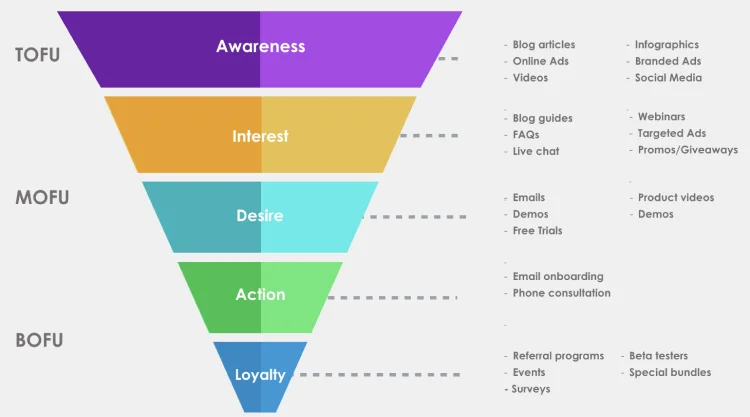
We’ve also included some examples of marketing strategies we use at PixelMe along each stage, and added one more stage to AIDA: customer loyalty.
This focuses on keeping your customers happy and retained. Upselling can be a major lever for increasing revenue, especially for B2B companies, where a tremendous 90% of a customer’s value can come after the initial sale.
Expanding the customer loyalty stage has also led to some new adaptations of the marketing funnel, into more of a circular and cyclical process (hint: a flywheel ⚙️).
Product-Led Growth Flywheels
Just like real funnels, as you saw earlier – traditional marketing funnels are linear and have an endpoint, as they evaluate the different stages it takes to turn a visitor into a customer.
But it doesn’t end there – there’s a whole other series of stages after someone becomes a customer. These are just as crucial for nurturing them to stay happy and loyal, so they can become advocates of your services.
When a customer champions your company, it’s really the ultimate growth gift that keeps on giving 💝. It kickstarts your enter funnel again, as loyal customers can bring in similar new customers, who in turn can bring in more great customers like them, and so on.
And the key to this all? Your product. Customers that are super happy and invested in your company are likely to tell their friends about it, and increase your word of mouth growth.
Enter: the product-led flywheel ⚙️. The new and revamped version of the marketing funnel 🔥.
A flywheel by definition is an energy-efficient, revolving wheel that’s used to increase a machine’s momentum and create greater stability or power. Much like the circle of life, which represents the infinite nature of energy.
Building your own flywheel means you can create a powerful system and endless loop for growth and stability. Everything is connected by your customers, who can bring in an infinite cycle of more customers. In the words of AppCues:
“The Product-Led Growth Flywheel is a framework for growing your business by investing in a product-led user experience. In this framework, the experience is designed to generate higher user satisfaction and increased advocacy, which in turn drives compounding growth of new user acquisition.”
Here’s what a Product-Led Growth (PLG) Flywheel looks like:
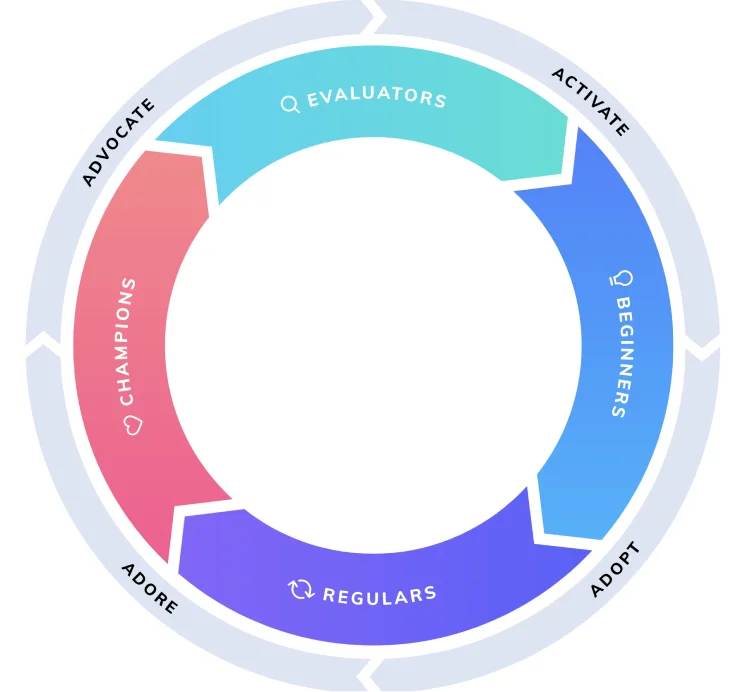
Product-Led Growth Flywheels vs. Marketing Funnels
There are a few key similarities and differences in a product-led flywheel vs. a marketing funnel.
Owner: Rather than being Marketing-owned, the flywheel puts Product teams in the driver seat and the product experience at the core of your customer journeys.
🎡 Framework & Teams: Similar to a marketing funnel with an AIDA framework, the product-led flywheel has 4 stages (AAAA), that align with AIDA.
- 🔎 1. Activate (Awareness & Interest): Increase Evaluators aka discovery of your products & services (e.g. website visitors). Teams involved: Marketing, Product.
- 💡 2. Adopt (Desire): Generate Beginners aka new leads (e.g. content engagement or free trial signups). Teams involved: Marketing, Sales, Product.
- ♻️ 3. Adore (Action): Acquire Regulars aka new customers who frequently use your products. Teams involved: Product, Customer Success, Marketing.
- 🥰 4. Advocate (Action): Grow Champions aka loyal customer advocates for your company. Teams involved: Product, Customer Success, Marketing.
By adopting a product-led flywheel, it can lead to growth in 3 key ways:
- 🚀 Adopt a long term customer view: Focus on keeping customers happy vs. only acquiring customers, which lends itself to higher Customer Lifetime Value and referrals.
- 📈 Scale more efficiently: Involving company-wide teams lets you collectively dissect how to create and launch the most effective growth strategies.
- Create organic influencers: The best part is that acquisition comes not just from your own Marketing, Product, and internal teams – but from your customers themselves.
Whereas linear paths are siloed, flywheels work together to develop efficient teams that strengthen your entire company.
How To Improve Leaky Marketing Funnels?
In the ideal world, your marketing funnel (or flywheel) would have 100% of people discovering your business become customers who promote your company to others.
But in reality, no business (or very few!) can achieve 100% conversion between each stage.
This means you have plenty of opportunities to tackle each stage individually and as a whole, to get a bird’s eye view of what’s working and plug any leaks to reduce customer drop-offs.
To help you increase conversion rates along your customer lifecycle, and more closely achieve a perfect flywheel, we’re sharing our favorite 4 tips and tools.
Tip 1. Customer Attribution
If you’re using multiple marketing channels (because which marketer these days isn’t 😉), marketing attribution tools are a key resource to have in your marketing funnel toolbox.
They let you easily find out which customer journeys and touchpoints convert best, and focus on optimizing your acquisition efforts to reduce customer drop-offs along each step.
💦 Leaks it can plug: All customer stages.
Tools to use:
- Bizible: If you’re a B2B company, Bizible is a leading marketing attribution tool that integrates directly into Salesforce and lets you plan, track, and improve your efforts based on revenue.
- AppsFlyer is a leader in the marketing attribution for mobile apps. They provide mobile marketing analytics to measure and optimize your mobile marketing campaigns.
- Smart Attribution is the first Customer Attribution solution for discovering your best marketing channels and seeing each touchpoint in your customer journeys.
Tip 2. Retargeting
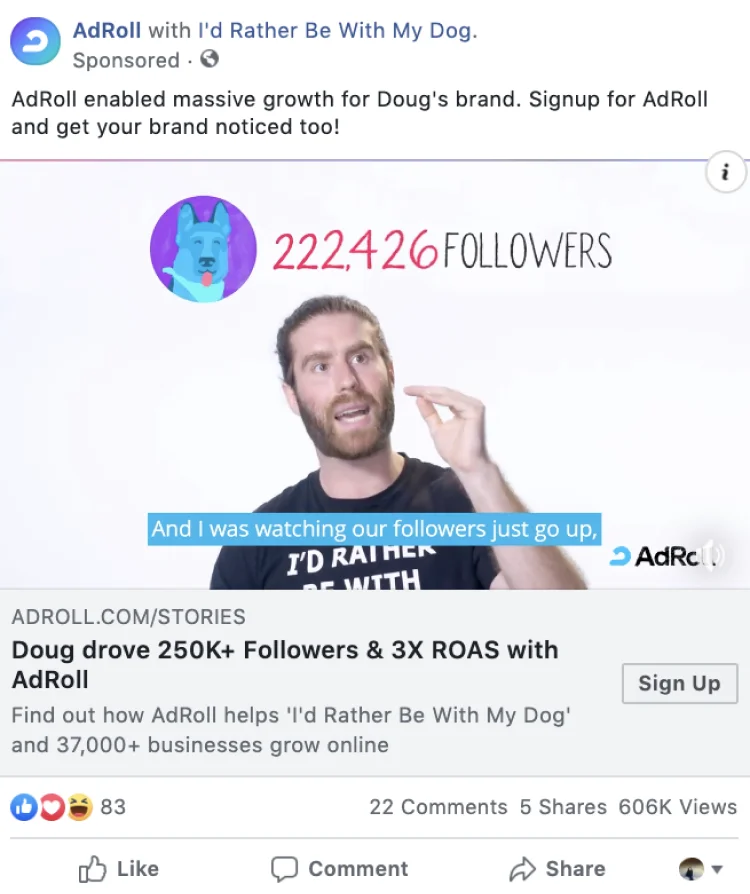
Website retargeting has been a proven tactic for re-engaging and converting people who visited your website or came from one of your brand awareness campaigns, but didn’t yet make a purchase or take another key action.
If you’re an E-commerce, retargeting your website visitors with display ads can lead to a 70% higher chance they’ll convert 🎯.
Link retargeting is also a newer technology that lets you embed an ad retargeting pixel into a link, so you can retarget anyone who clicks on your links. This is especially beneficial if you share 3rd party links, such as YouTube videos or PR articles.
💦 Leaks it can plug: Activation and Adoption.
Tools to use:
- AdRoll is an established leader in online advertising services, particularly retargeting. They partner with all major advertising platforms (Facebook, Google, Yahoo, Microsoft), and have over 37,000 customers including Levi’s and Salesforce.
- Audience Builder is a link retargeting tool that lets you build retargeting audiences from any links you share.
Tip 3. Personalize your onboarding
Personalizing your marketing campaigns, especially during onboarding, is key for ensuring people can become power users and strong advocates for your business.
For example, personalizing your email campaigns can result in an average ROI of 122%.
You can test personalizing multiple parts, from the email content (e.g. subject line with the company name) to creating rule-based campaigns based on specific product behaviors they took (or didn’t take yet).
💡 Example: We send personalized, rules-based in-app messages via Intercom to encourage customers to use more features that help them analyze their attribution.
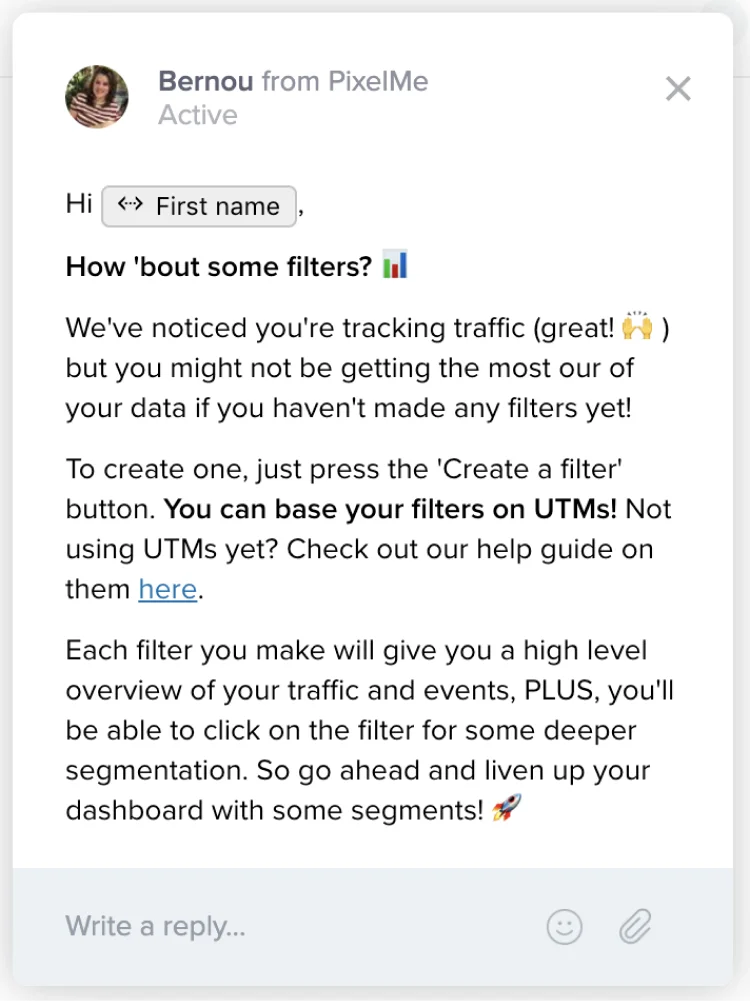
💦 Leaks it can plug: Adoption and Adoration.
Tools to use:
- CRM software: HubSpot (SMB) and Salesforce (Enterprise) are both leading platforms for managing and segmenting your customer database.
- Marketing Automation: Mailchimp (SMB) and Marketo (Enterprise) provide marketing automation platforms that let you nurture customers & develop lifecycle campaigns.
- In-app messaging: Intercom, Drift, or AppCues for customer experience software.
Tip 4. Customer Feedback
Listening to your customers is something you’ve probably heard many times before. But we truly believe in this at PixelMe for creating a brand and product people love.
Amazon and Buffer both adopt customer-first values, and it’s led their customers to virally share many of their happiness experiences.
It’s also why we built our Customer Attribution platform – purely based on major pain points we heard from our community.
💡 Example: Buffer has both a dedicated BufferLove Twitter account and #BufferLove Instagram Stories highlight capturing organic customer happiness stories.
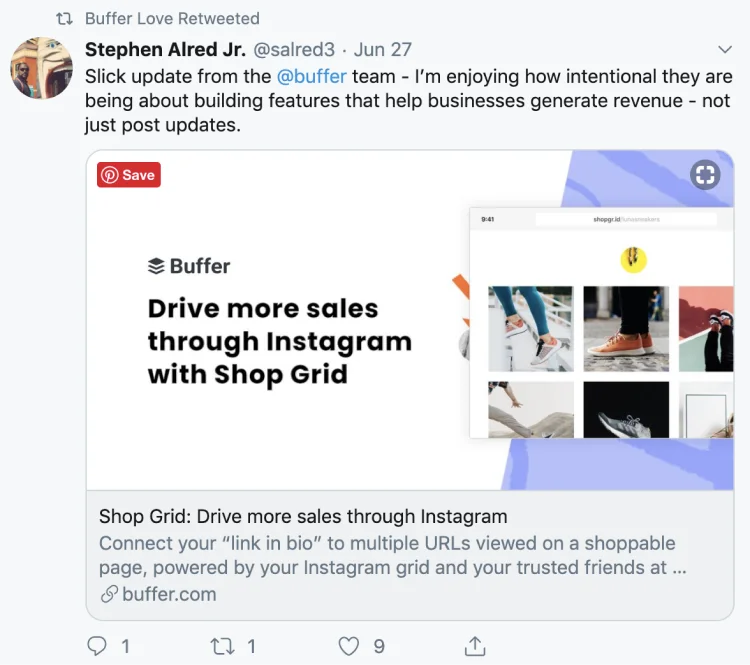
💦 Leaks it can plug: Adoration and Advocacy.
⚙️ Tools to use
- Drift or Intercom: Provide live chat support for real-time feedback, and aggregate top requests & pain points to improve your onboarding.
- JotForm or Typeform: Email customers or send regular surveys to get product feedback.
Getting Started
With your new knowledge on marketing funnels and flywheels, it’s time to start building your own frameworks or optimizing your existing ones!
It’s best to start by mapping out each of the key stages in your customer journeys, from awareness, to conversion, to loyalty.
Then, use various tools from Customer Attribution platforms, retargeting, personalized marketing automation, and customer feedback, to measure and optimize each stage for increased customer happiness and ultimately higher revenue.
And just like having an interconnected strategy across teams can let your company best scale, as Mufasa once said to Simba in The Lion King : “Everything you see exists together in a delicate balance…we are all connected in the great Circle of Life.”
Want to track the effectiveness of your marketing funnels? Sign up for a free PixelMe trial 🎉. Or message us with any questions from the blue chat icon in the bottom-right corner! 💬
If you liked this article and want to power up your marketing with similar content, subscribe to our Carbon6 newsletter
